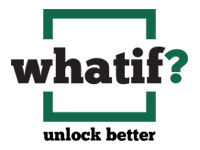
“Seeing Clearly: The Two Leadership Blind Spots That Changed How I Lead”
"In a world moving this fast, the leaders who thrive won’t be the ones who know the most; they’ll be the ones who see the clearest."
What if the costliest mistake we make as leaders isn’t from bad intentions but from misunderstood perceptions?
In my leadership journey, I’ve learned that the hardest lessons weren’t from strategy, performance, or priorities; they were about relationships. More specifically, they stemmed from my confusion between perception and perspective, as well as overvaluing intent over impact.
While these might sound like semantics, believe me, they’re not.
They’re blind spots, and if left unexamined, they can erode trust, reduce psychological safety, and limit the team, cultural, and organizational growth we want.
What I had to Learn: Perception isn’t Perspective
There have been times when I walked into a meeting room, scanned the body language, and quickly drew conclusions about the participants:
- He’s disengaged
- She’s resistant
- They are not bought in
What I’ve learned – slowly and sometimes painfully – is that my perception of someone’s behaviour is rarely the same as their perspective. I was filtering through my own biases and style: expedience, expectations, and experience.
As psychologist Daniel Kahneman reminds us, “We are blind to our blindness; we have very little idea of how little we know.” [I highly recommend reading his work and his book, Thinking Fast and Slow, in particular.]
The big unlock for me was adopting an ‘ask versus tell’ mindset and learning to ask, not assume.
What’s behind this behaviour? What pressure might they be carrying? What don’t I know?
Great leaders reflect and create space for perspective before making judgments based on their perception. Perception is easy, but often wrong. While perspective takes patience, it builds trust.
Important Lesson Two: Intent Doesn’t Equal Impact
I once gave feedback to someone I managed. I thought I had been clear, candid, and caring. Later, I discovered what they had experienced. Abrupt, impatient, and not hearing.
- My intent was to support.
- My impact was discouraging.
This is one of the most common leadership gaps I see in my work with leaders, having fallen into it myself. We judge ourselves by our intent (“I mean well”), while we judge others by their impact (“That didn’t land well”). And because we all want to believe we are good, well-intentioned people, acknowledging and changing this can be hard.
But leadership isn’t about being right. It’s about being effective.
The shift comes when we stop defending our intent and start owning our impact. It’s not weakness. It’s maturity. It’s the difference between “they’re not getting the message” and “I could have said that better and more clearly”.
Why does this Matter Now?
In a world moving this fast, the leaders who thrive won’t be the ones who know the most; they’ll be the ones who see the clearest.
As leaders, we must remind ourselves that transformation occurs beyond workshops and roadmaps. It happens in moments of emotional misalignment – the ability to listen, see others, and repair. Aligning action with empathy isn’t a so-called “soft skill”; it’s advanced leadership work. It’s the stuff that makes us distinctive from the pack.
And in my experience, nothing unlocks better leaders, teams, and growth than the courage to name and learn from these blind spots.
Your Next Move?
Ask yourself, or your team:
- Where might I be mistaking perception for perspective?
- What conversations am I narrating from the outside instead of understanding what’s going on inside?
- Where has my impact been misaligned with my intent?
- And, who do I need to revisit with clarity and care?
Closing Thought
To unlock our full potential as leaders, we must first unlock a deeper awareness of ourselves, others, and the gap between our intentions and what others experience. That’s where the real but hard work begins.
Let’s unlock better – together.


Leave a Reply